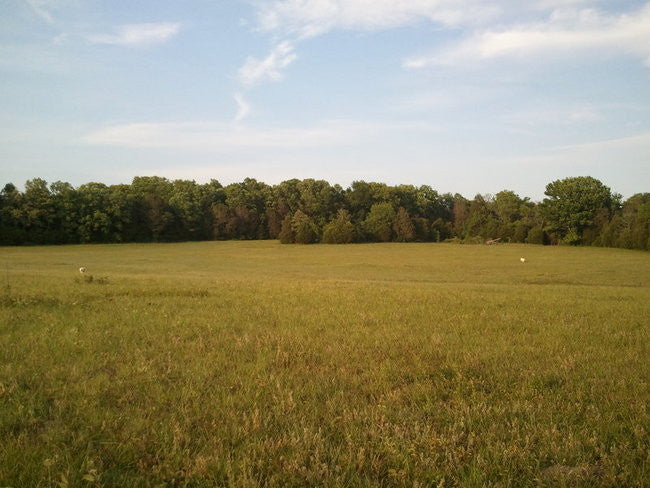
 Izzy and Sophie, getting muddy and getting their "mark" on
Izzy and Sophie, getting muddy and getting their "mark" on
Last Saturday I picked up a couple adult livestock guardian dogs (LGDs). They are 3 and 4 yrs old and are full sisters from different litters. Izzy and Sheba are their names. They are 1/8th Anatolian Sheperd and 7/8ths Great Pyrennes. We just refer to them as Great Pyrs, but they do have some Anatolian traits, including some darker hair around the shoulder blades. Around here the new LGDs are known as “the big girls”, becuase, well, they’re freakin’ huge! We thought Sophie was getting to be a big girl. She looks like a little peck compared to her new friends.
Why Get Livestock Guardian Dogs?
We are using LGDs because we’re in an area that has coyotes, packs of wild dogs, and other predators (potentially including a bear, although that’s yet to be substantiated). Our goats are vulnerable to predation when they’e out on pasture, especially when they have little goat kids running around with them. It's the dogs responsibility to help protect them. It's our responsibility to facilitate the dog's success as a guardian and keep them happy and healthy.
Livestock guardian dogs have roots dating back over 6,000 years. They aren’t herding dogs, they are only protection dogs. This was something that initially confused me; I thought they would herd and protect. Then we went to some farms in Italy and I saw these big white dogs getting pushed around by little ole sheep. “What the heck!”, I thought to myself. "Aren't these dogs supposed to be herding the sheep, and not the other way around?". Then I saw the smaller collie-looking dogs around the perimeter and realized that the dogs served different functions. The protection dogs stuck with the pack and were generally timid around the stock. The smaller dogs hung around the periphery, sometimes getting a little more aggressive, keeping everyone together. This is the basic difference: LGDs behave as members of the herd, herding dogs behave as if they were stalking prey (although they don’t, or aren’t supposed to, kill, obviously).
 Once we introduced them to Sophie, the big girls immediately ran all along the perimeter and marked their territory. It was fun to watch
Once we introduced them to Sophie, the big girls immediately ran all along the perimeter and marked their territory. It was fun to watch
What Breeds are Really LGD’s and are they Always Big White Dogs?
LGD’s aren’t always white, but many times they are. They are definitely always big. One belief is that LGDs were specifically bred for the colors of the livestock they were guarding. White wool was favored by Romans, and thus white sheep were bred, and white LGDs were selected to protect them. White dogs had a higher likelihood of acceptance into the flock. Once a member of the flock, the dog had a higher propensity to protect the flock. White dogs also helped shepherds distinguish between predators (wild dogs, coyotes, etc) and protection.
There are many breeds of LGDs, the most common in the US being the Great Pyrennes, or the Pyrenean Mountain Dog. Some of the popular breeds in the States are Karakatchan (Bulgarian), Maremma (Italian), Kuvasz (Hungarian), Anatolian Shepherds and Akbash (Turkey), among a multitude of others.
With Izzy and Sheba on-board we now have two Pyrs and a Maremma (Sophie). The breeds are similar in a lot of respects, but very different in others. The Pyrs tend to be larger than the Maremmas, particularly the skulls. The Pyrs that we’ve seen may also have some darker coloring, sometimes around the face. Maremmas are typically bright white, and are said to excel at protecting against aerial predation. So far Sophie hasn’t shown much of that trait. I recently saw the Pyrs chase off a Red Tail and some Turkey Vultures though. Sophie’s just a pup, so she still has a year or two to fully develop.
Both breeds are naturally very protective of us, our stock and our territory. We are still working to bond them more to the goats. So far they are more protective of us. Bonding the dogs with the stock can be a long process if the dogs didn't grow up with the stock, or if the dogs are puppies. Both of those are true in our case. So that's our project over the next year or two.
They've already given us some good stories, which I'll share in a future post. Until then I'll just say that I love having the LGDs and I'm really excited to learn more about raising and training them. It's been a lot of fun having dogs again, in NYC that just wasn't realistic...


